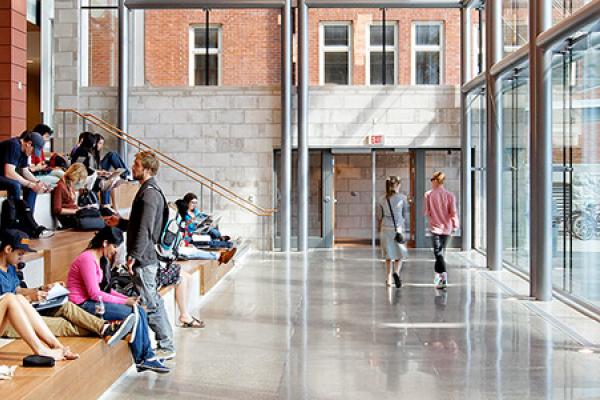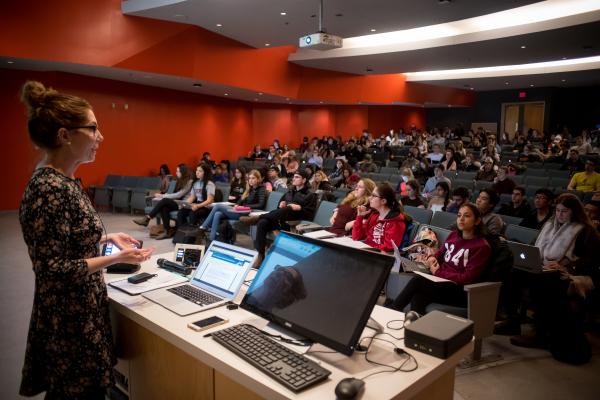Welcome to Queen's! As a Queen's staff member, you get access to exclusive Queen's-provisioned services. Take a read through our guide below to help get you started with IT at Queen's.
NetID
When you accepted a position with Queen's, you were assigned a NetID – a unique network identification that allows you to access many of Queen's online services.
You can activate and/or manage your NetID and password using Queen's Identity Platform. Note that Queen’s will never ask you for your NetID and password via email or phone.
It is important to never share your NetID and password with anyone.
Activate and Manage Your NetIDEnrol in Endpoint Protection
Endpoint protection (EP) is the cybersecurity approach to defending endpoints (i.e. end-user devices such as desktops, laptops, and mobile devices) from malicious activity. Protecting user endpoints is critical to ensuring the confidentiality, integrity and availability of Queen’s data and systems.
Endpoint protection requirements will be enforced over time at Queen's. All Queen's-funded devices* (including desktops, laptops, tablets and mobile devices) must be enrolled in Intune and onboarded into MDE.
If you wish to use your personally-funded device (PFD) to access Queen's systems, there will also be endpoint protection requirements:
- To access the Microsoft 365 Suite (including email and calendar), the device must be enrolled in Intune so we can confirm it is cybersafe, or "healthy".
- To access PeopleSoft HR (including MyHR) and PeopleSoft Finance, the device must be enrolled in Intune and onboarded into MDE. Over time, this list will include more applications.
*A Queen’s-funded device (QFD) is a device that is paid for using a Queen’s account code, a research grant managed by the University, or a professional expense allowance.
Get Started with Endpoint ProtectionConnect Your Devices
Queen's offers both wired and wireless connections for staff on campus.
Staff seeking a wireless connection should connect their devices to the QueensU-Secure network. Visit the Wireless Campus Network service page for information on how to connect your device, and for information on what other networks are available.
Staff looking to connect their devices via a wired connection should visit the Wired Campus Network service page for more information on connecting.
Wireless Connection TutorialsGet Familiar with Microsoft 365
Staff members have access to the Microsoft 365 collaboration suite for the duration of their employment at Queen's.
Use your NetID and password to log into Outlook on the web and set up your email and calendar account.
You can access Microsoft 365 by signing in from the web. You can download apps to your desktop and mobile device for seamless collaboration.
Learn More About Microsoft 365Connecting Remotely
Queen's staff members who are working remotely should check out IT Services' guide to Connecting, Collaborating, and Working Remotely.
The guide outlines how to prepare your remote work station and provides information on connecting and collaborating from your remote location.
Connecting and Working RemotelyAccess Free Software
Queen’s University provides students and Staff with access to an impressive suite of collaboration and productivity tools. This includes Microsoft 365 tools. Examples of provided software include:
- *Adobe Creative Cloud: software used for graphic design, video editing, web development, photography, and more.
- *Adobe Express: software used for social media graphics, flyers, logos, posters, advertisements, banners, business cards, and more.
- Articulate 360: allow you to easily create responsive, interactive course content. The suite includes:
- NameCoach: users can record the pronunciation of their name in an audio file, include pronunciation notes, include preferred gender pronouns and customize their audio link to aid accessibility.
The full list of software and instructions for downloading titles are available in the Software centre.
* This software is only provided when specifically requested by a faculty or department and carry an associated service fee that is billed to the department.
Additional IT Considerations

Learning How to Use Available Software
Learn how to use the software that is available to you:
-
Microsoft Training: Links to videos, tutorials, and FAQs to learn how to use these productivity tools.
-
Microsoft Learning Tools: Microsoft Learning Tools is natively built into Microsoft 365 and Microsoft Edge applications. The immersive reader capability in Learning Tools gives users the ability to have content read aloud to them, and lets them adjust settings to break the words into syllables, adjust text size or background colors.

Communication and Collaboration Resources
Resources to help you collaborate, communicate, and learn remotely include:
-
Microsoft Office: Outlook, Word, Excel, PowerPoint, OneDrive & more - your go-to productivity app for mobile devices.
-
Microsoft Teams: Your hub for teamwork. Conversations, files (Word, PowerPoint, Excel), group calling, and apps live together in a single shared workspace.
-
Zoom: Start, join and schedule sessions; send group text, images and push-to-talk messages on mobile devices.

Preparing Your Technology for Queen's
Queen's offers both wired and wireless connections for staff on campus.
Staff seking a wireless connection should connect their devices to the QueensU-Secure network. Visit the Wireless Campus Network service page for information on how to connect your device, and for information on what other networks are available.
Staff looking to connect their devices via a wired connection should visit the Wired Campus Network service for more information on connecting.
Protecting Your Devices and Data from Harm
Phishing emails attempt to defraud users of their personal information. View tips on how to identify phishing emails.
IT Services strongly recommends reporting phishing, spam, and abusive emails. Learn how to report suspicious or unwanted emails.
Queen’s has introduced Multi-Factor Authentication (MFA). Multi-factor authentication adds a second layer of security, keeping your account secure even if your password is compromised.
Enrolling in MFA is easy! Check out these steps to enrol your account.
If you’re running a supported version of Windows, you’re probably already set. The latest versions of Windows have Windows Defender pre-installed.
If you have an older version of Windows or a Mac, you should investigate the best antivirus solution for your operating system. Check out the Antivirus page for more information about antivirus and your system.